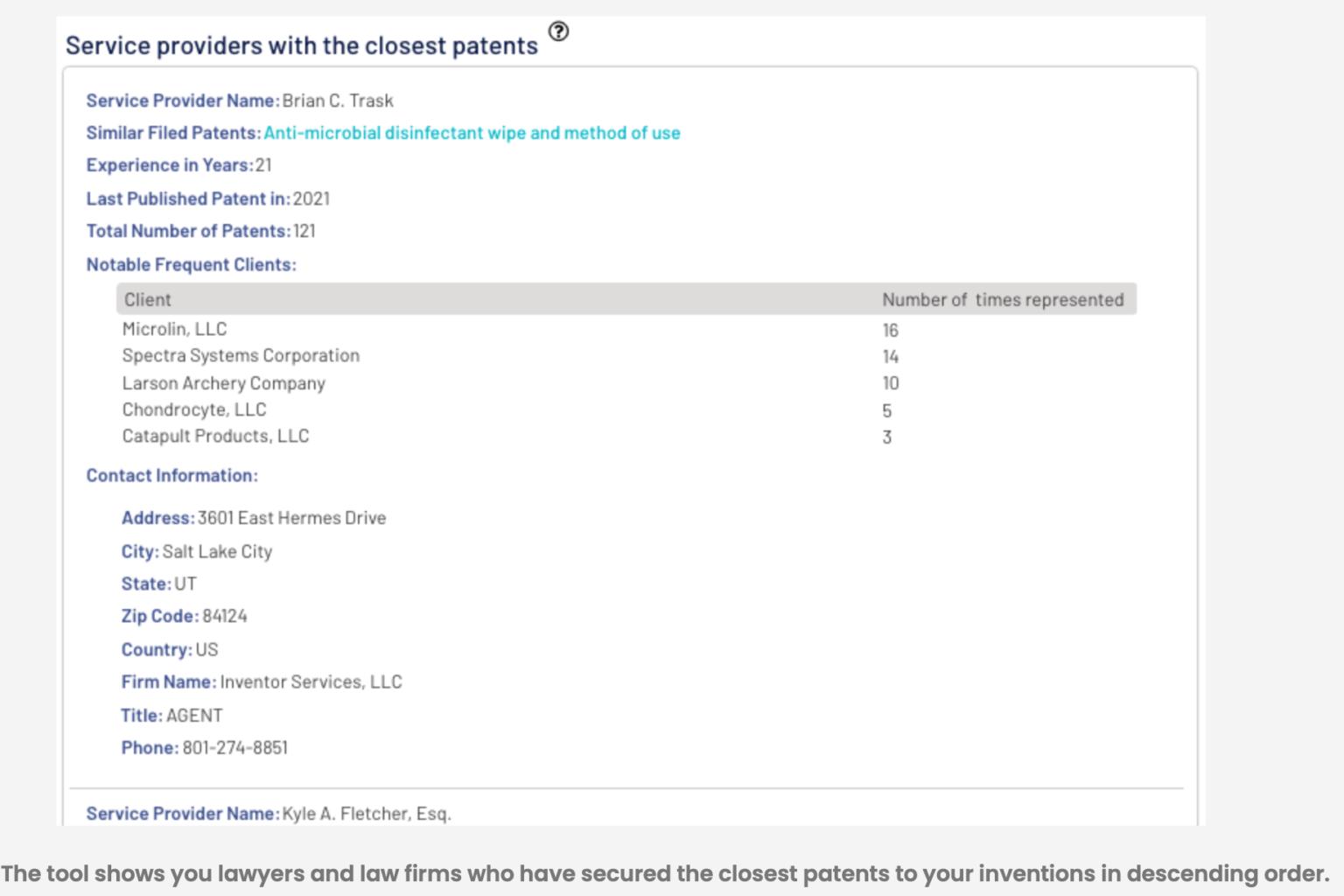Using AI to Discover the Right Lawyer For Your Invention
“Inventors are from Mars, lawyers are from Venus.” That line captures a real challenge: when your invention sits in a niche domain, it’s hard to find a patent lawyer who already understands the details of your specific field. Traditional legal directories rarely help; listed specialties are broad and self-claimed. What you need is evidence of real, hands‑on experience with inventions like yours.
That’s the idea behind Patent Lawyer Finder. It uses NLP and deep learning trained on US patents published since 2005 to identify lawyers and law firms who have successfully handled technologies similar to your invention. Instead of browsing a directory with generic tags, you get a data‑driven map of relevant expertise.

How it works
The system learns the language of patents and then measures the technological similarity between your invention summary and millions of filings. It extracts the names of lawyers and law firms who prosecuted the most relevant patents, then presents:
- A histogram of highly active lawyers and law firms in your field
- A ranked list of the lawyers/law firms with the closest patents to your invention
This two‑view approach is powerful. The histogram gives a bird’s‑eye view of the most active experts; the closest‑patent list highlights the practitioners most aligned to your specific niche—whether that’s a particular microbiology subdomain or a narrow computer architecture topic.
Why this matters
If your invention touches a niche area, you need counsel who understands that niche. A data‑driven match means you’re more likely to collaborate with someone who can identify critical claim elements, use the right terminology, and navigate relevant case law—reducing the risk of weak or invalid patents.
“A patent lawyer must understand the technology, know the field of the invention, and identify the critical aspects to protect.”
Getting started
- Write a concise, non‑confidential summary in natural language describing your invention and field.
- Review both views: top active lawyers/firms and those closest to your invention.
- Shortlist candidates, then contact them to discuss strategy, timelines, costs, and potential conflicts.
References
This article was originally published on Artificial Lawyer on June 23, 2022.